There are two questions pertinent to this twenty-four degree morning. What effect will there be on the garden? And, why was I headed to work on a chilly Saturday morning?
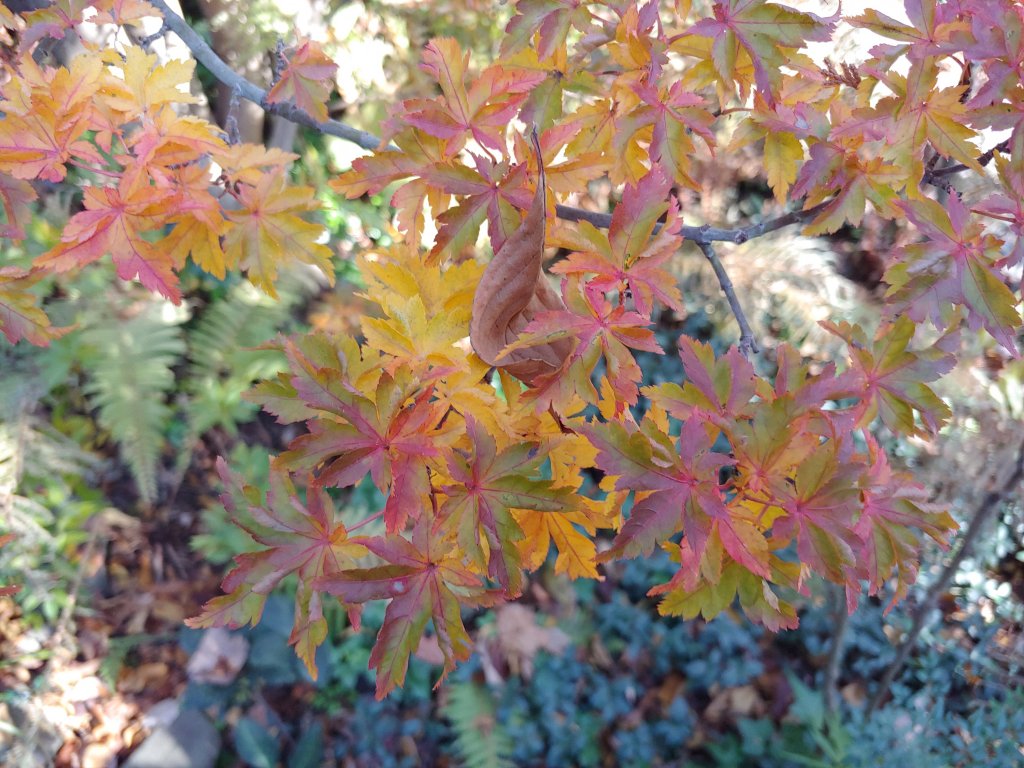
At least I’m home early. The heavy frost has melted in a sunny morning, which has now turned to a cloudy afternoon. Today is far from ideal to be working outdoors, and my garden stroll is abbreviated to add another warmer layer. With guests coming for Thanksgiving I will clear the stone paths of leaves, perhaps today, but before light rains forecast for tomorrow evening.
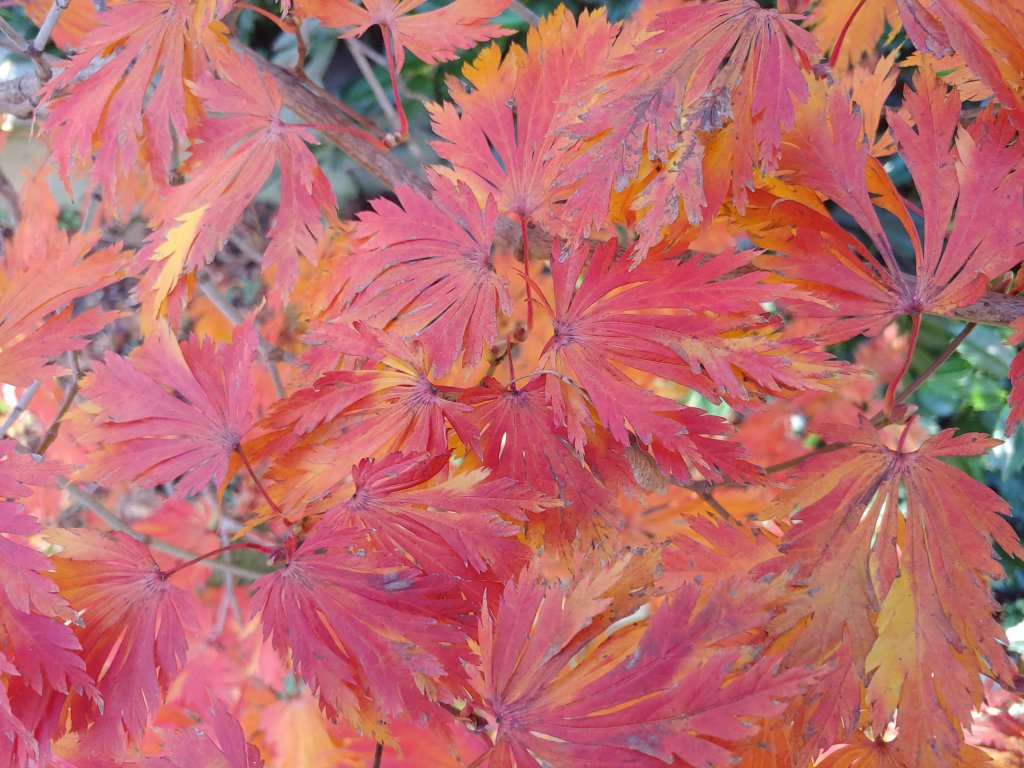
I wait to remove fallen leaves until tulip poplars and maples in the forest that borders the garden are bare, and today only a few of the garden’s Japanese maples (above) have leaves that remain. These are quite glorious after recent freezing temperatures.
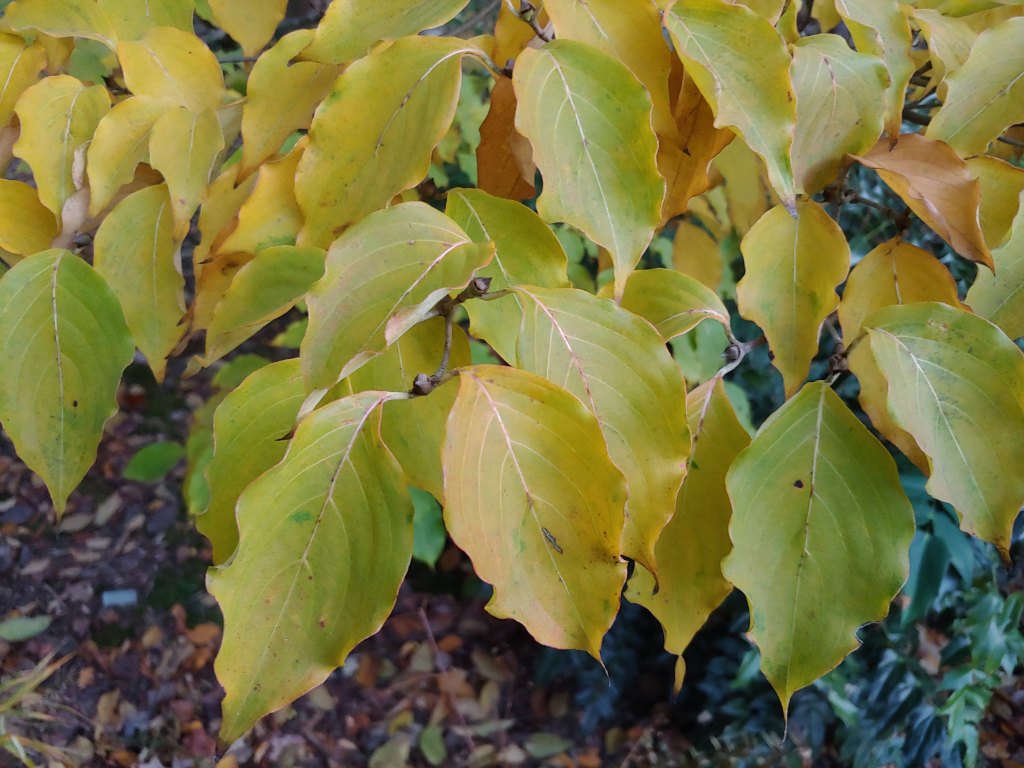
While native dogwoods have been nearly bare in recent weeks, Chinese dogwoods (Cornus kousa, above) have been remarkably colorful, from reds to rich yellows. This afternoon, leaves are falling, except a young, red flowered ‘Scarlet Fire’ (below) with leaves of heavy substance that seem likely to hold for another week.
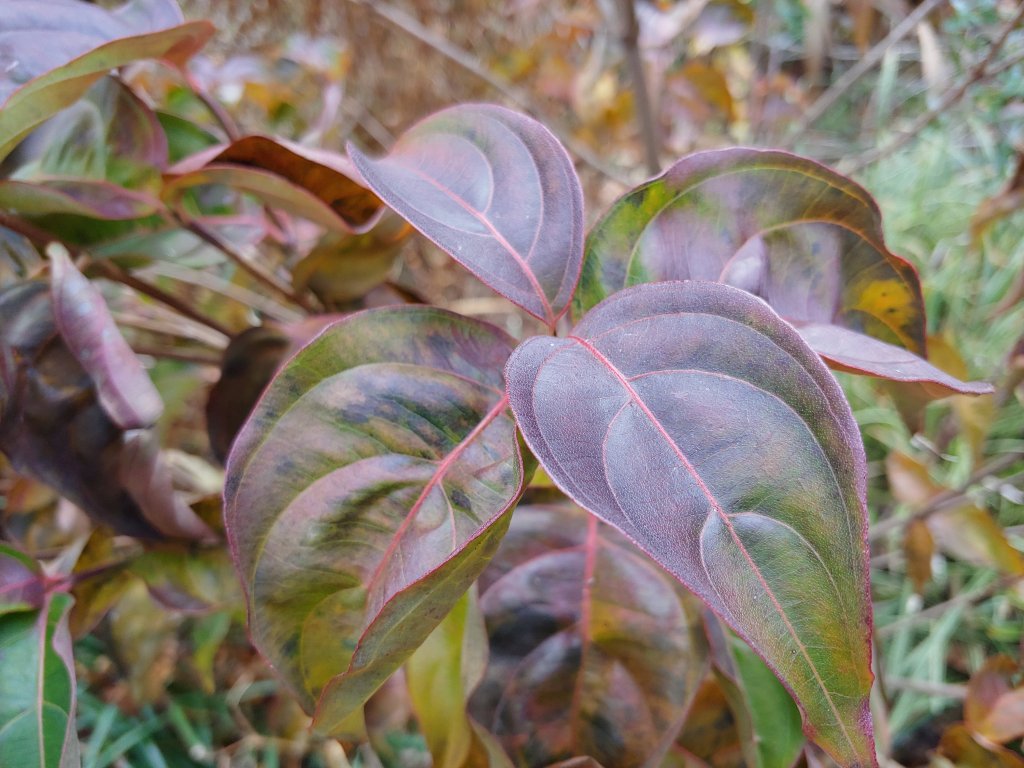
The few flowers of reblooming azaleas faded in last night’s cold, though ‘Autumn Amethyst’ has partially opened buds that could flower later this week. Scattered blooms of two ‘Summer Ice’ daphnes (Daphne x transatlantica ‘Summer Ice’, below) survived the freeze, and these will continue until cold temperatures are more consistent instead of this recent pattern of several days of cold followed by mild afternoons.
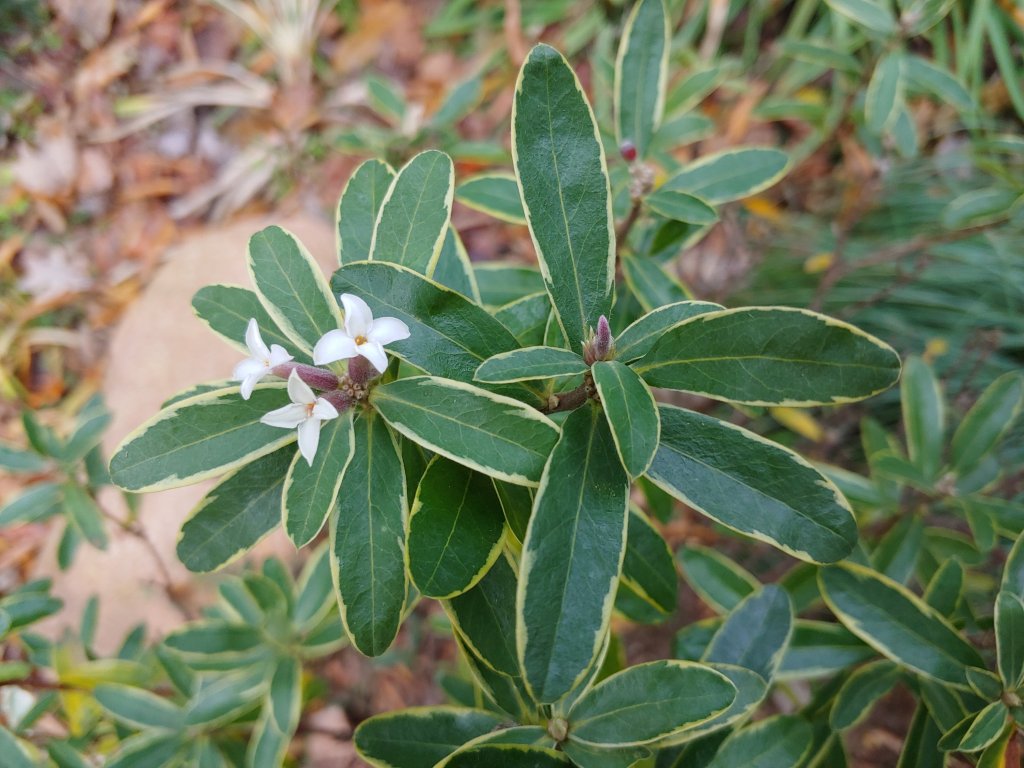
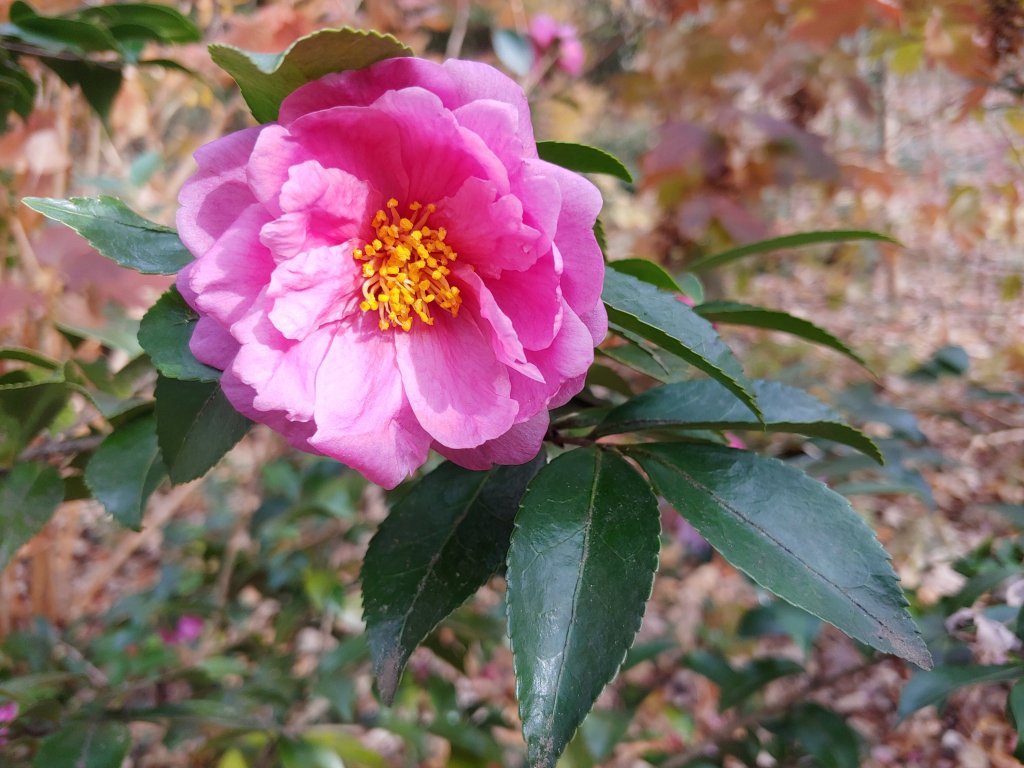
Flowers of the late autumn flowering camellias show a bit of damage from recent freezes, but no more this afternoon than on recent nights a few degrees milder. I have been corrected countless times by my wife not to say “a few degrees warmer” since this is a difference of degrees below freezing. I defer to her expertise. In any case, recent chilly temperatures should delay the peak bloom of the various winter flowering mahonias (Mahonia x media ‘Winter Sun’, below).
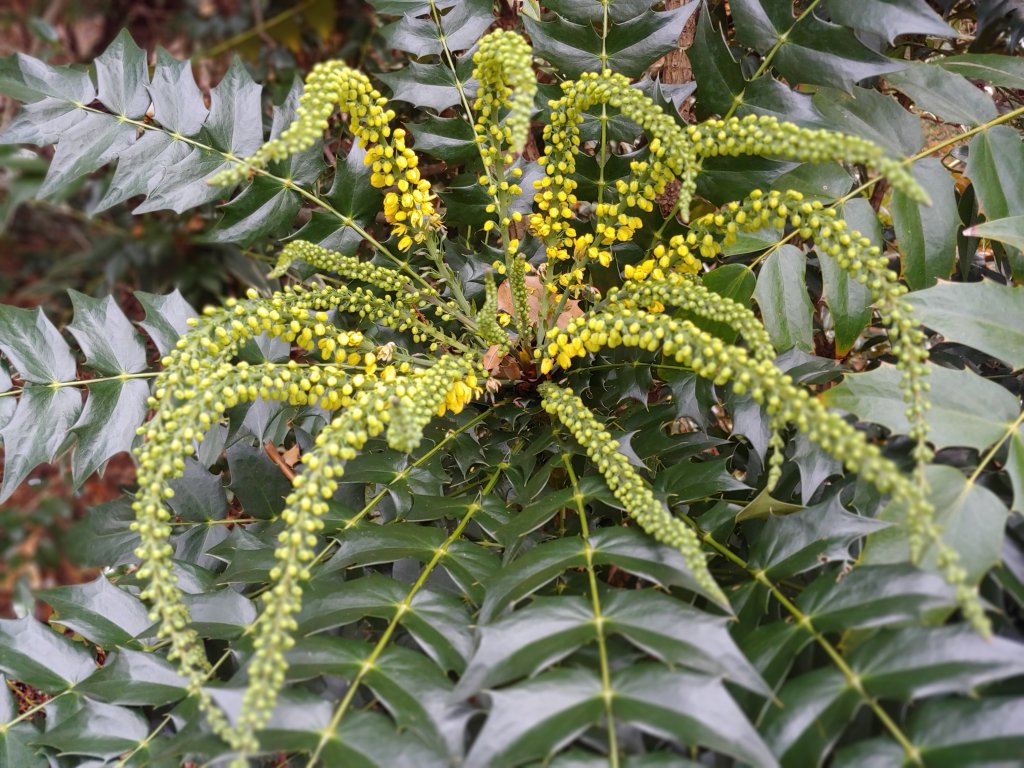
Unsurprisingly, flowers of several common witch hazels (Hamamelis virginiana, below) are not bothered by the cold. In recent years several have been planted in varying degrees of sun and shade, along with a cultivar said the flower later than others. One or all might persist in flower until vernal witch hazels (Hamamelis vernalis) begin flowering in early January.

Certainly, effects of this twenty-four degree night are evident. The garden is more bare than a week ago, and even yesterday, but there is plenty of reason to get out into the garden, and not only to clean up fallen leaves.
I would like to wish you a happy Thanksgiving and gratitude for the beautiful photos and commentary that you shared throughout the year.
My Japanese maples have also been glorious but the 20° plus nights I’ve had in the past couple of days, just south of you have caused just about everything to lose their leaves.
Still beautiful on the ground however.
Again, thank you and many blessings for the coming year.
Thank you for reading and for your insights.